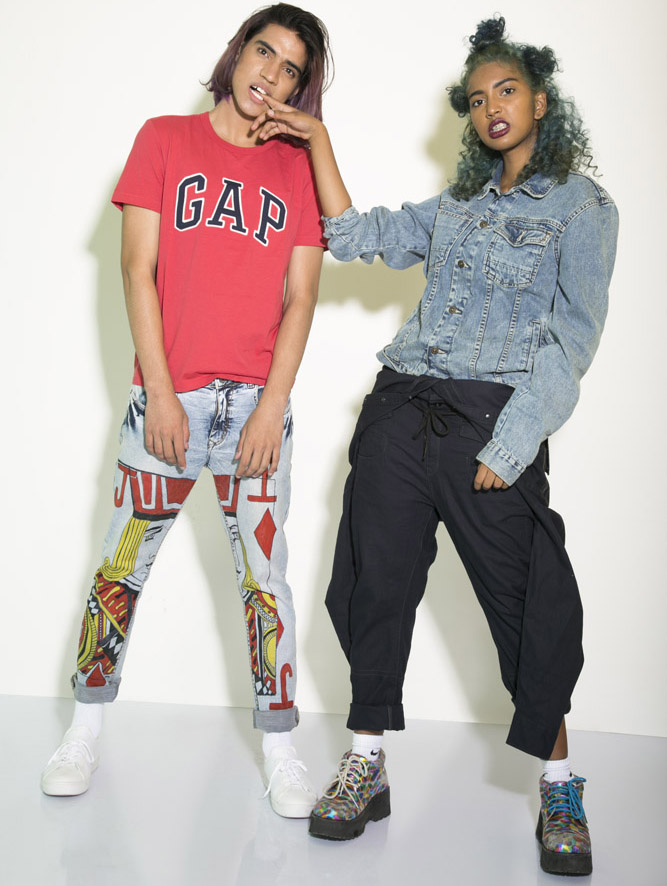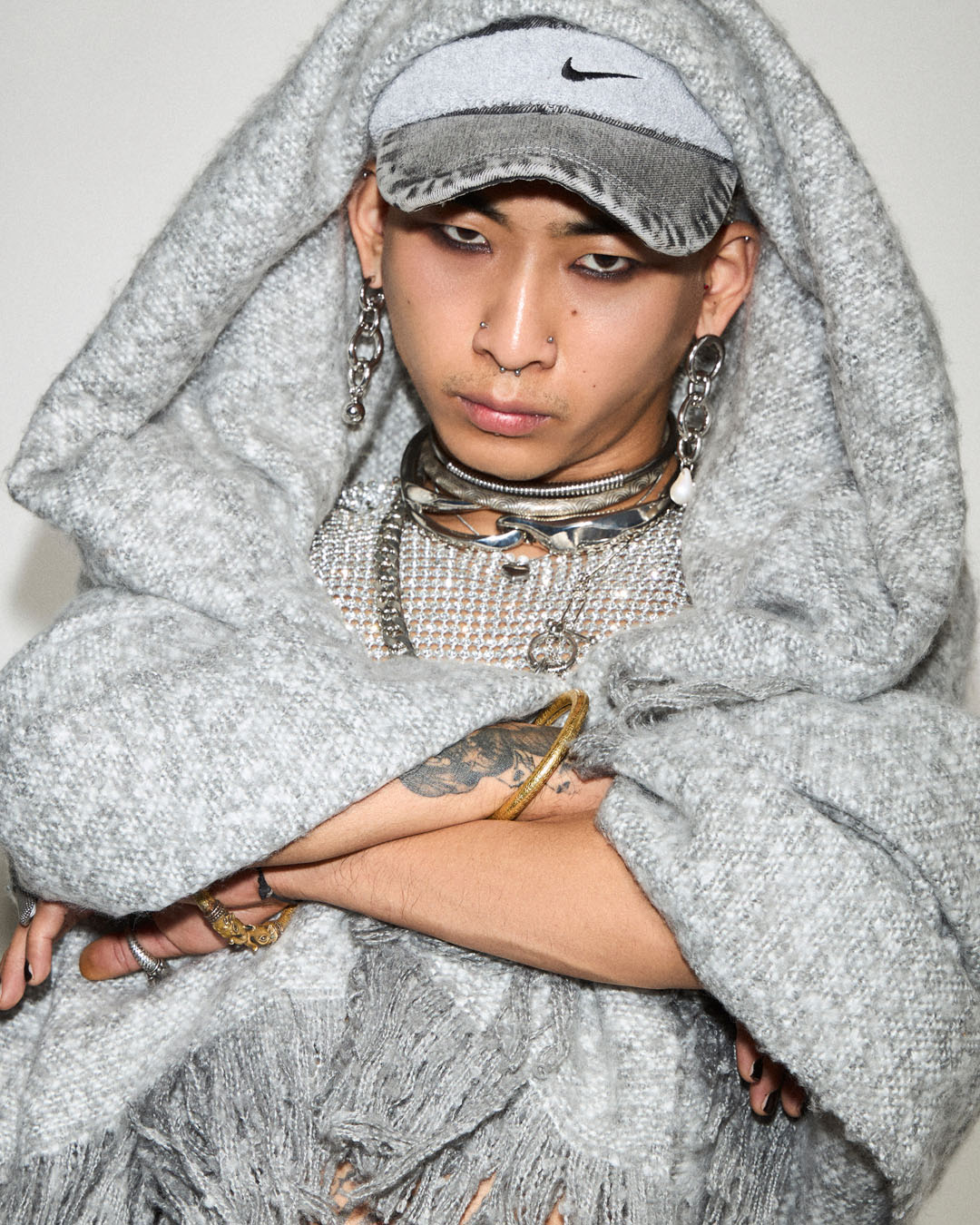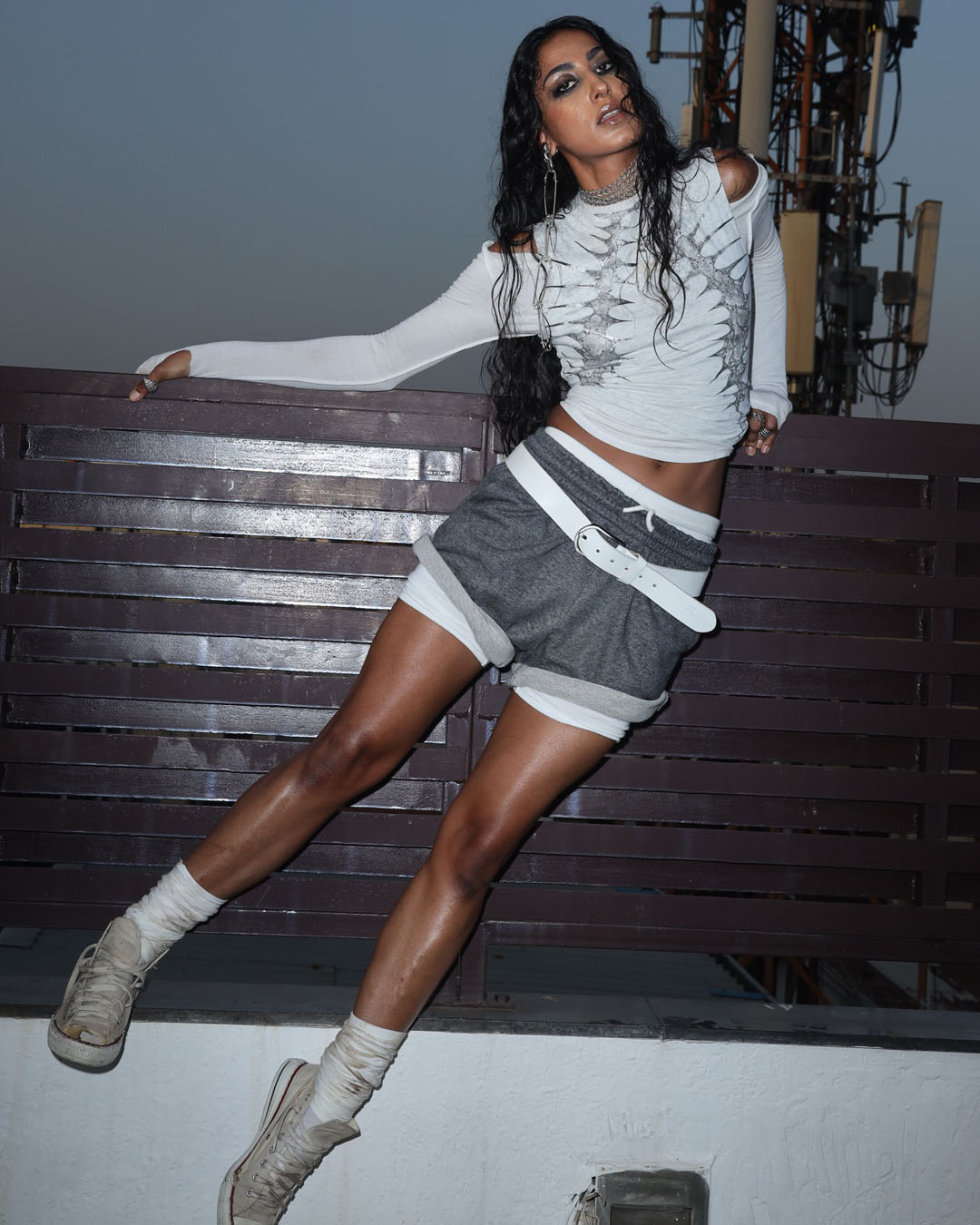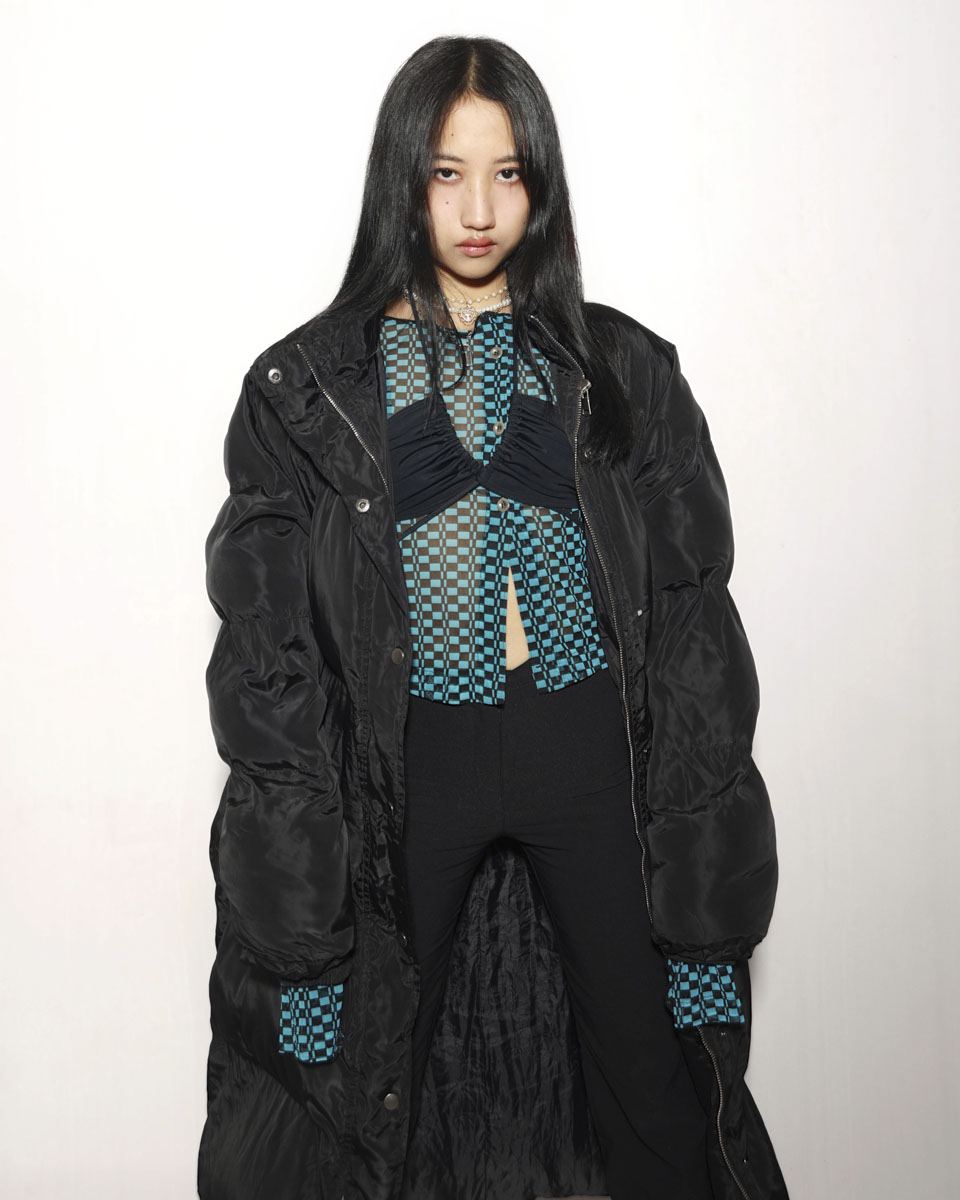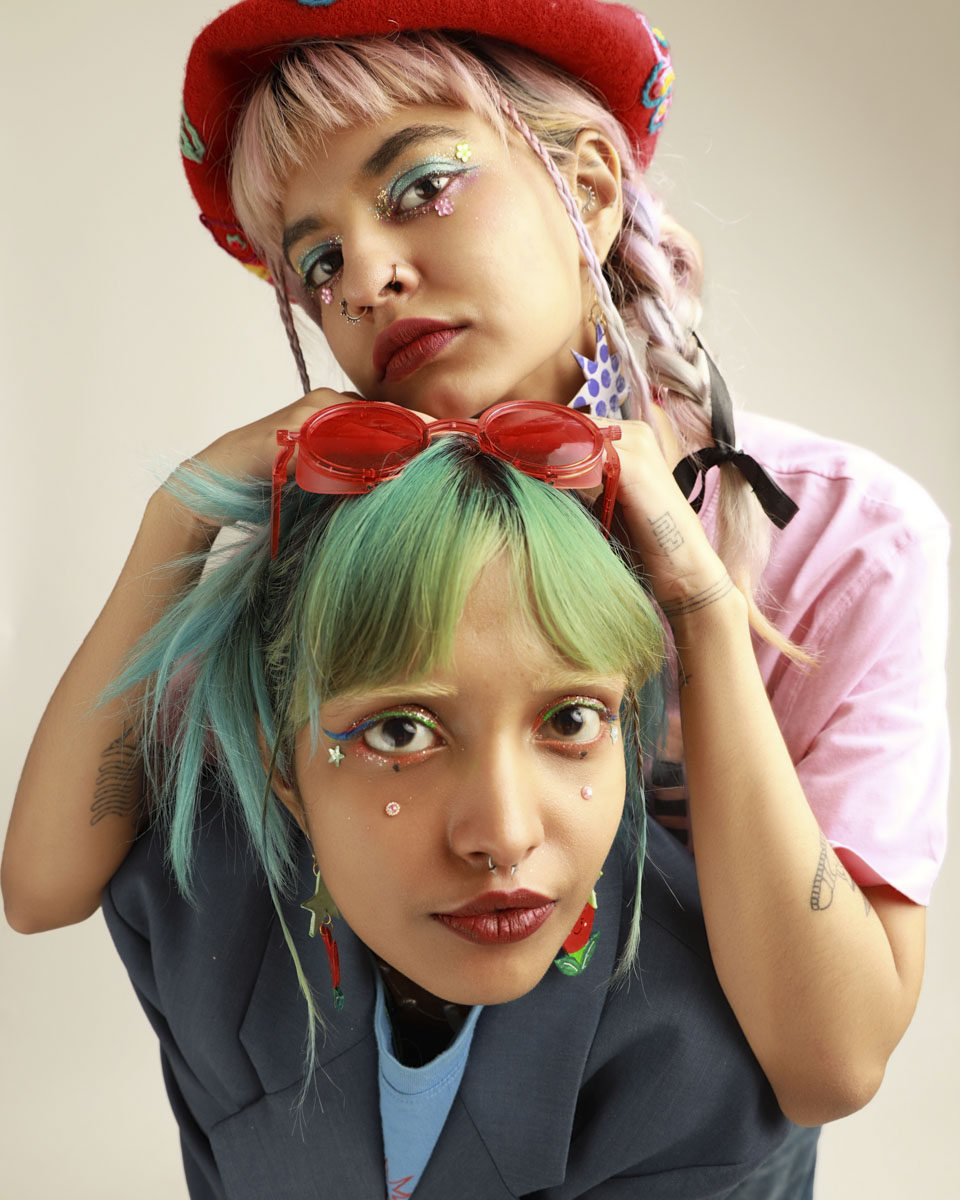Words Angélique Raina
Photography: Runvijay Paul Make up: Radhika Khunteta Hair colour and styling: Rod Anker and Mohit Kumar Sain at Rod Anker Salons
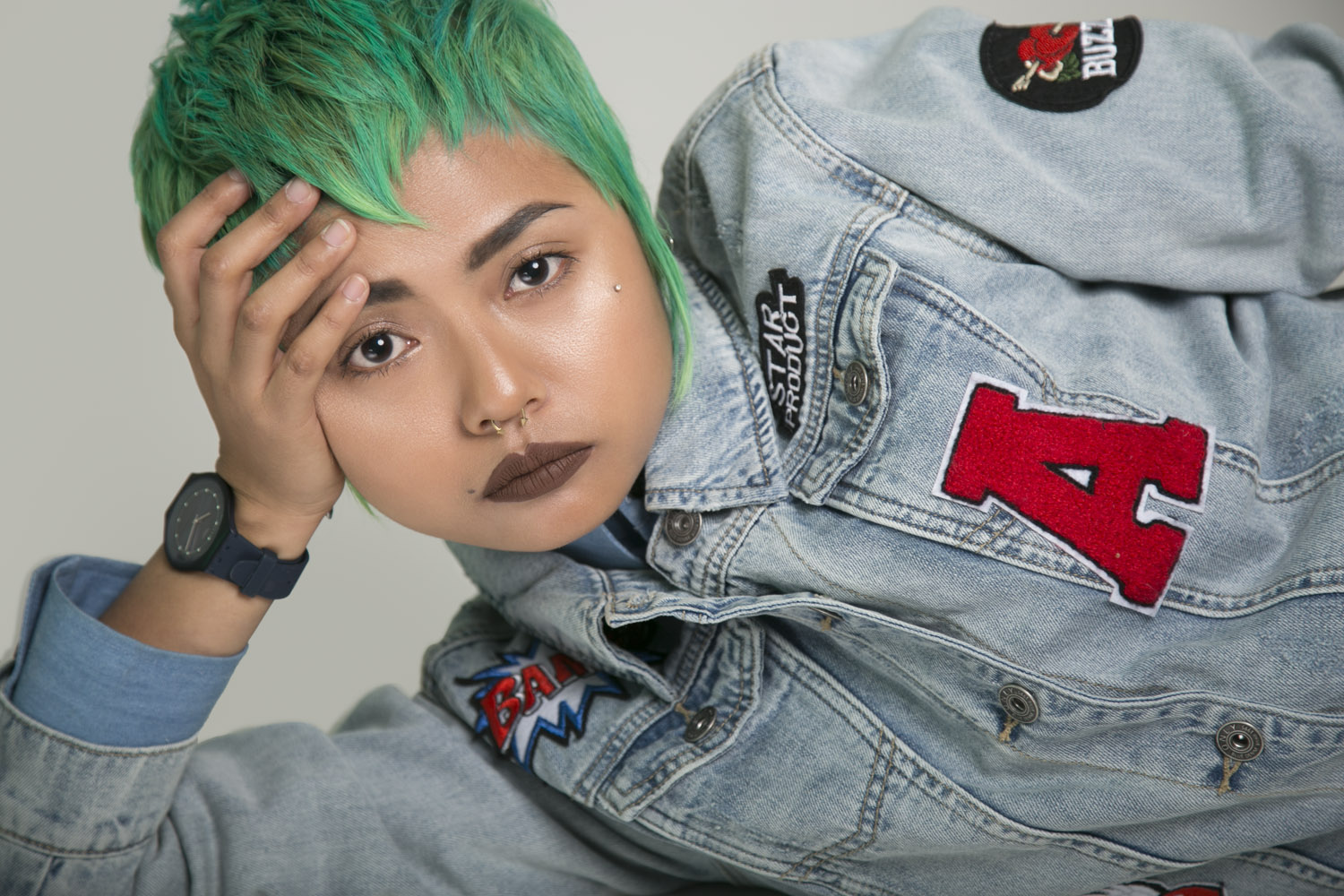
Lir is wearing Watch, Swatch; Jacket, Vero Moda; Shirt, Theorem
As far as quote clichés go, your style should be able to speak without words. Hair definitely goes a long way to express “you”. Sometimes, the combination of colors and your hair can go viral. People have had their careers launched because they look “different”. But what’s the big deal, anyone can change their hair to orange? But would you? We met five brave and bold individuals, paired them with hair stylist supremo Rod Anker and discussed their transformation and the culture (not trend) of hair dying.
Whether we learned through popular culture, or popular culture learned through us; in most stories, dramatic and positive shifts in the life of a lead or protagonist sparked or required an external makeover. This transformation starkly signals to those around them that they are in a new phase. It allows them to feel different, by looking different and allowing people to recognize their internal change too. Namita, now part teal, reflected on her first experience of dying her hair at this shoot “…my friends were inspired by how unafraid I was of something so drastic. But the biggest change was how I started treating myself differently. I felt more true to myself.” In those stories, the most reacted to the element of a makeover: a bold new hair color and cut. But, rarely does that protagonist go for an unnatural color like highlighter green. Usually, they try to fit into society or a new career – not to stand out more in it. And that is why we aren’t telling you that exhausted story all over again. But, really though, why is dying one’s hair SUCH a big deal? Well, our preferred contemporary protagonists will tell you. Ask @SooJoo (Platinum white) @IreneIsGood (Rainbow-hued) or @FerandaLy (blush pink), who were all propelled into stardom because of their adventurous hair. Notably, hair that contrasted from their ethnicity or anything we expected to go viral and “work”. See, aesthetic and human beauty preferences will always drift with the cultural currents, but for many of us, our drive to alter or/and recreate ourselves is constant. It takes on different outlets and some more visible than the other, but the core intention is same. Something, fresh and special to identify ourselves and only ourselves.
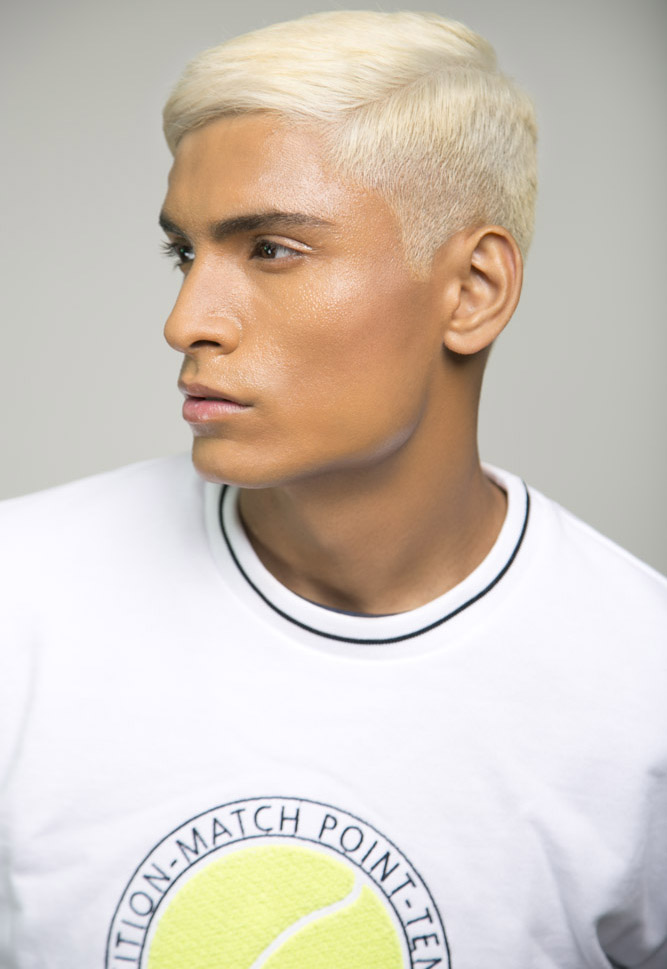
Hitest is wearing: Jumper, Zara
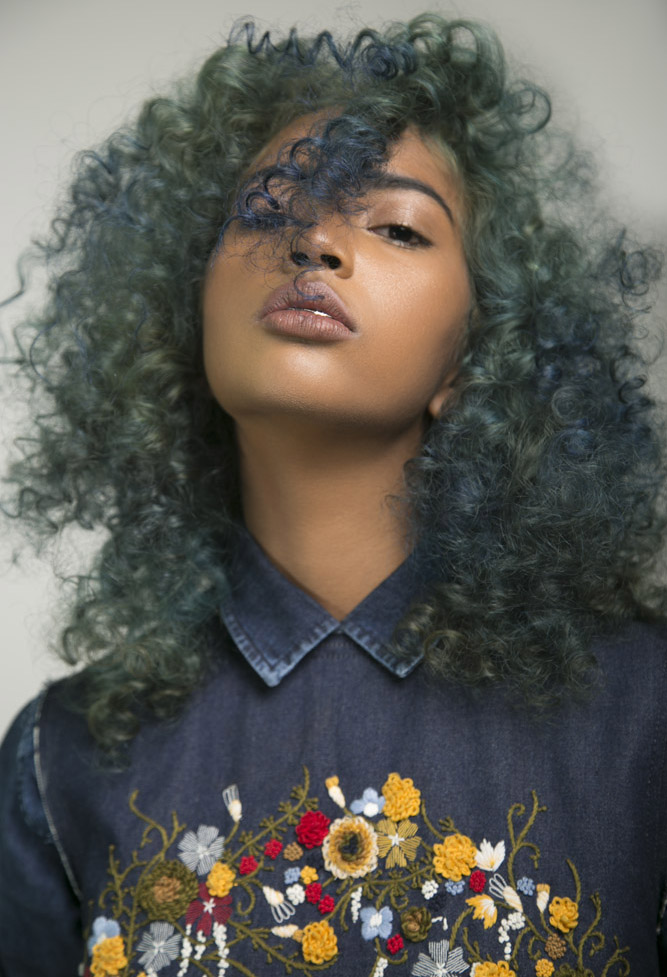
Namita is wearing: Shirt, G-Star Raw; Dress, HUEMN
The people starting the style and even the style of hair itself have their own large fan bases, just search the names above and/or the hashtags: #PastelGrunge which is platinum blonde accented with pastel highlights. Ever wanted to be a unicorn? Now you can #UnicornHair Are you stuck in a day job that doesn’t allow this? Then #HiddenRainbowHair – is definitely for you! Or if you really want to reimagine yourself, try #LollipopHair or #CrayolaHair (both self-explanatory). With every media outlet online and offline toasting to celebrities and influencers sporting what becomes iconic instaworthy hair, it’s not odd to expect civilians to carve out their own looks too. This, coupled with our digitally rewired and dopamine-addicted minds, the impulse to give in and try, something risky yet unique to us, is hard to control. Hair has always been one of the points of control and distinguishing identity: for men and women, it’s the first way they are differentiated as a gender. Institutions and religions, schools to the army, from prison to a small party, having distinctive hair in any of these controlled environments will always be a demarcation of difference not just of preference but an outlook of expression in life. This is important. “Lir, the girl with the yellow hair…” (that’s how she was known before the shoot – is now green), mentions she is currently listening to Mø- Freedom. Stuart, sporting the purple-to-green mix, is telling me about how he is discovering his own aesthetic through experimenting with ideas from shoots “I was never keen on bold bright colours, but after this, I’m going to try anything…” Hitesh, Mr. Platinum-White, is about to leave for Mussourie for the weekend. Namita, demure in teal, is the hair dye virgin of the bunch and we have been playing phone tag for days and days. Ayesha, the-veteran-hair-dyer (pink-red-ombre), replies to my questions on WhatsApp; I open with “describe yourself?”, she mentions amongst other things that she’s “shy”. This eclectic lot are short lipped, but strongly curious, needing not much more persuasion to do something, than a small desire to do that exact something.
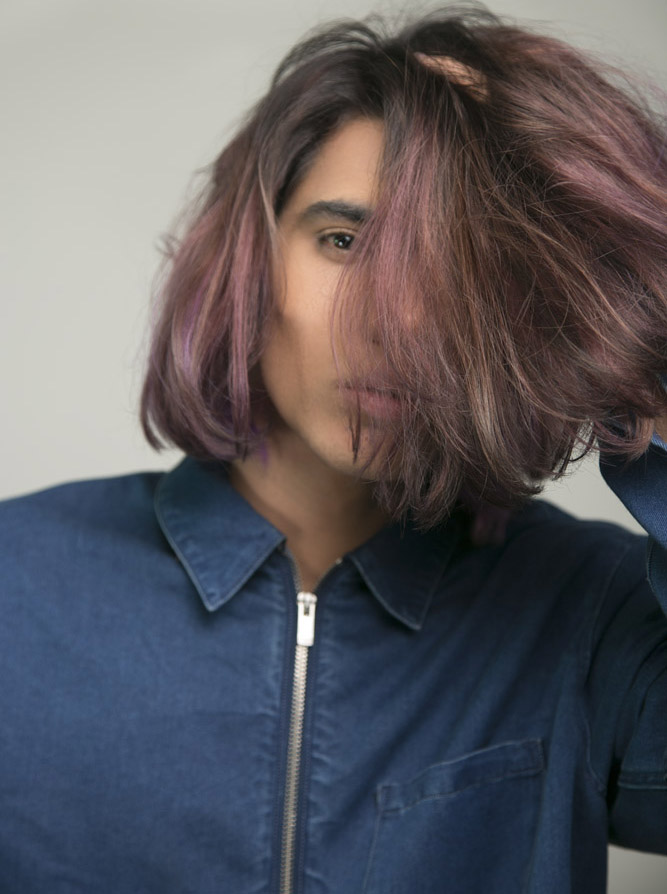
Stuart is wearing: Shirt, H&M
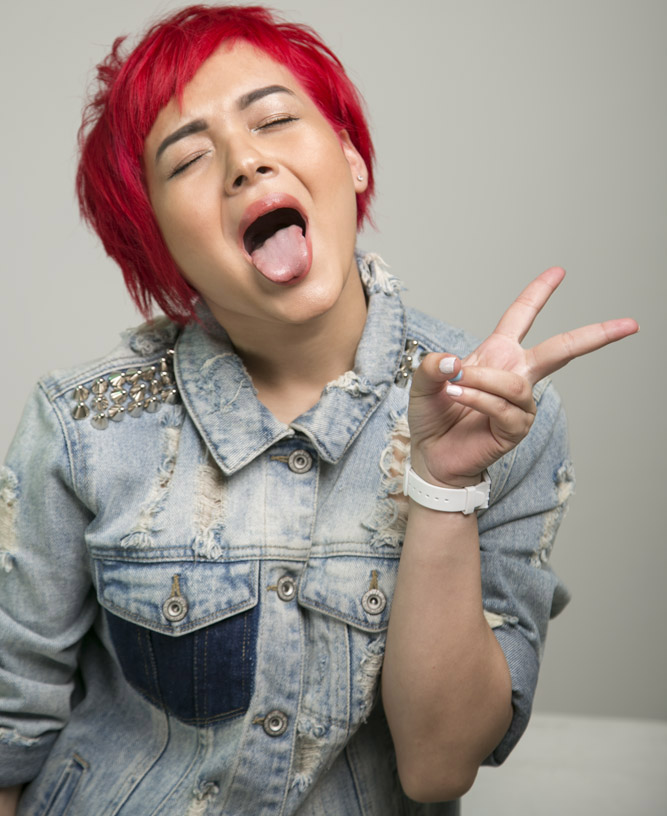
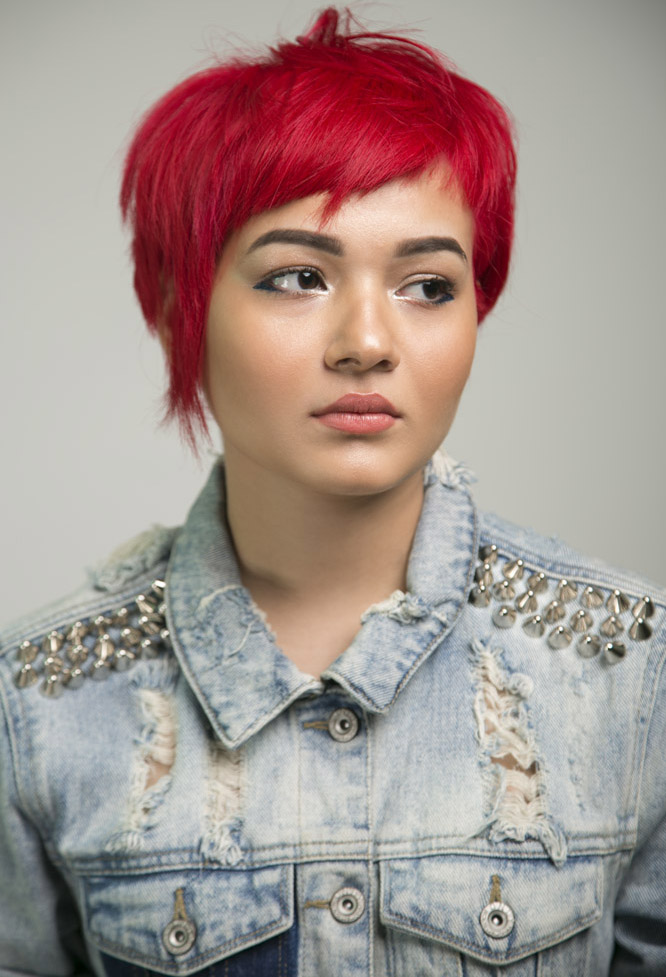
The issue has sourced inspiration from urban tribes, as they are or relocated them to a set for ease of documentation. Here Namita, Lir, Hitesh, Ayesha, and Stuart, go under an aesthetic transformation, one that many others claim has changed their lives. The editorial team at Street Style Spotlight, explain that they did not select this group for their collective look, but their distinctive authenticity. With a close eye on groups of urban youth, this bunch was curated from a large network. Most of them meeting each other for the very first time. They are not just pretty looking kids, and they are not just this way for the camera. In fact, it seems the camera found some of them as they were. A while ago Lir was spotted for her defiant yellow hair, profiled multiple times by popular print magazines and online ones too, they wanted to showcase her individuality, so they could align themselves with her transformation and in some way, analyze her choice in context of our hierarchical society, almost. So, what prompts people to dye their hair? Well, what prompts most people to try or do anything, boredom. It’s likely not to be a political statement, no patriarchy they are standing up to or parents they want to annoy. Talking to Stuart, Ayesha and Lir, there is a strong sense of wanting to express the self or, trying to embody the music or cultural icons they admire and revere. But it varies for the group: Lir, doesn’t do it for approval, yet, Ayesha says she has made friends through it, Hitesh says while it wasn’t the reason, he did get more work. For all, compliments are plenty. That kind of positive reinforcement has got to be encouraging. They all say strangers comment or come up to them a lot. And after the initial shock, all families easily accept it. The reaction is a big justifier to continue experimenting. For those shy, it is a magnet; for those who usually blend into crowds, a conversation starter – because it’s something so visible and obvious that sets them apart while still fitting into the scene. You’ve always got to have that one kid with bright hair, except now, at the right party, there is more than just a few. I asked Rod, is it only the visual effect of colour that is attractive, is there something deeper? “On one level it’s simply the color, on another level it’s a form of admiration almost… ” I assume he means admiration for the boldness to try something they couldn’t. Ayesha adds, “it does require guts… ”
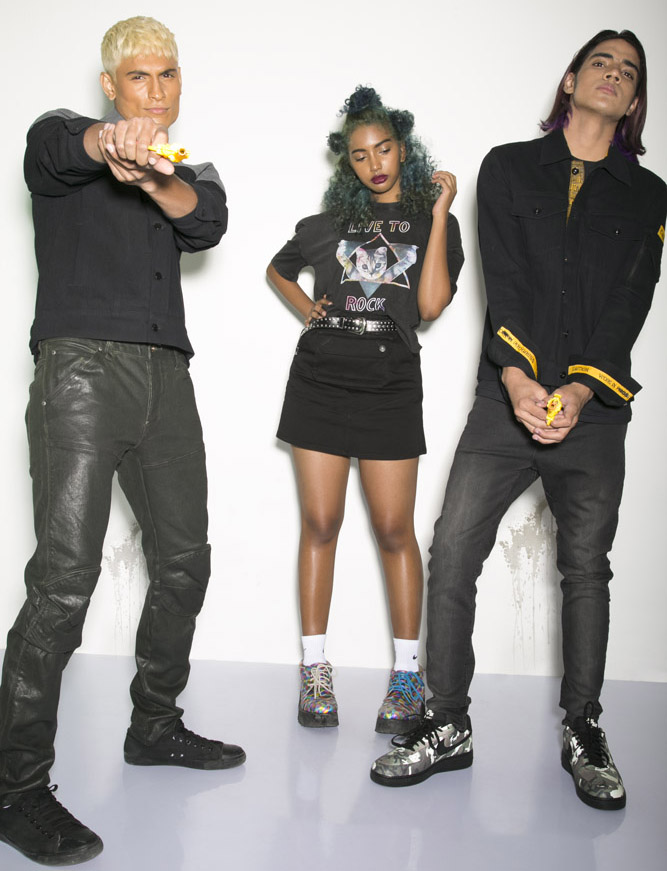
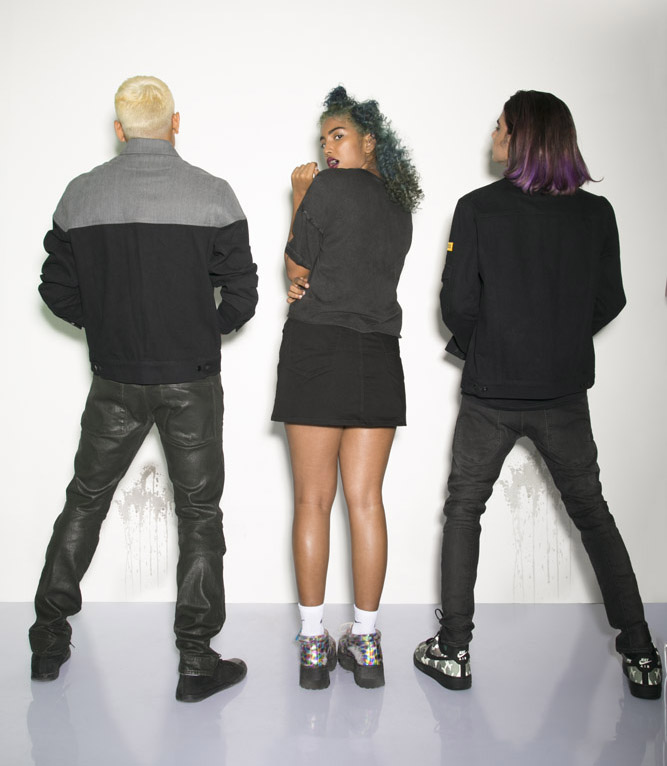
As an observer and participator of the fashion industry and culture at large, I have found some people sometimes often spend their entire life maintaining who they naturally are, or are searching for their next look. Self-images are a tricky thing. Our partners may want us to look different from how our mothers might like us most, our social media followers could encourage something our dearest friends make fun of us for. Rod Anker says, “…most people have wondered about going a bold color at some point of time, it’s just a matter of having the courage and conviction to do it and more people are, 6-8 a week for a look like the ones we just shot” But why aren’t there more colorful heads bobbing about? There is curiosity, the reactions even from strangers is positive, what is holding them back? Rod says “Hair is part of your personality and whilst people like to blend in and not expose themselves too much, others want the complete opposite to what everyone is doing. Some people like to put other people in boxes, you are this age, you should be doing xyz etc. So it can be parents or employers -people get scared. But I say to them, it’s hair, it grows back.” After that exchange I think of the time it takes to grow back, and what if someone just doesn’t have the time to justify what could be seen as an absurd hair-do in a corporate environment? In reality, it could mean they lose their jobs! There is a certain privilege that working in the creative industries allows, one we shouldn’t ignore before we take the colorific dive into the deep end. Today, a 4-5 hour sit at the salon has the power to take a generic member of the human race and catapult them to instalike stardom. Gone are the days of blending into the background, shape-shifting every season to suit any style or trend that our celebrity of preference wears; today we celebrate and champion the power of the individual, new iconoclasts, and the cult of one (distinctive). But to be able to admire them, they need to change and stand out, so we can see them first.
